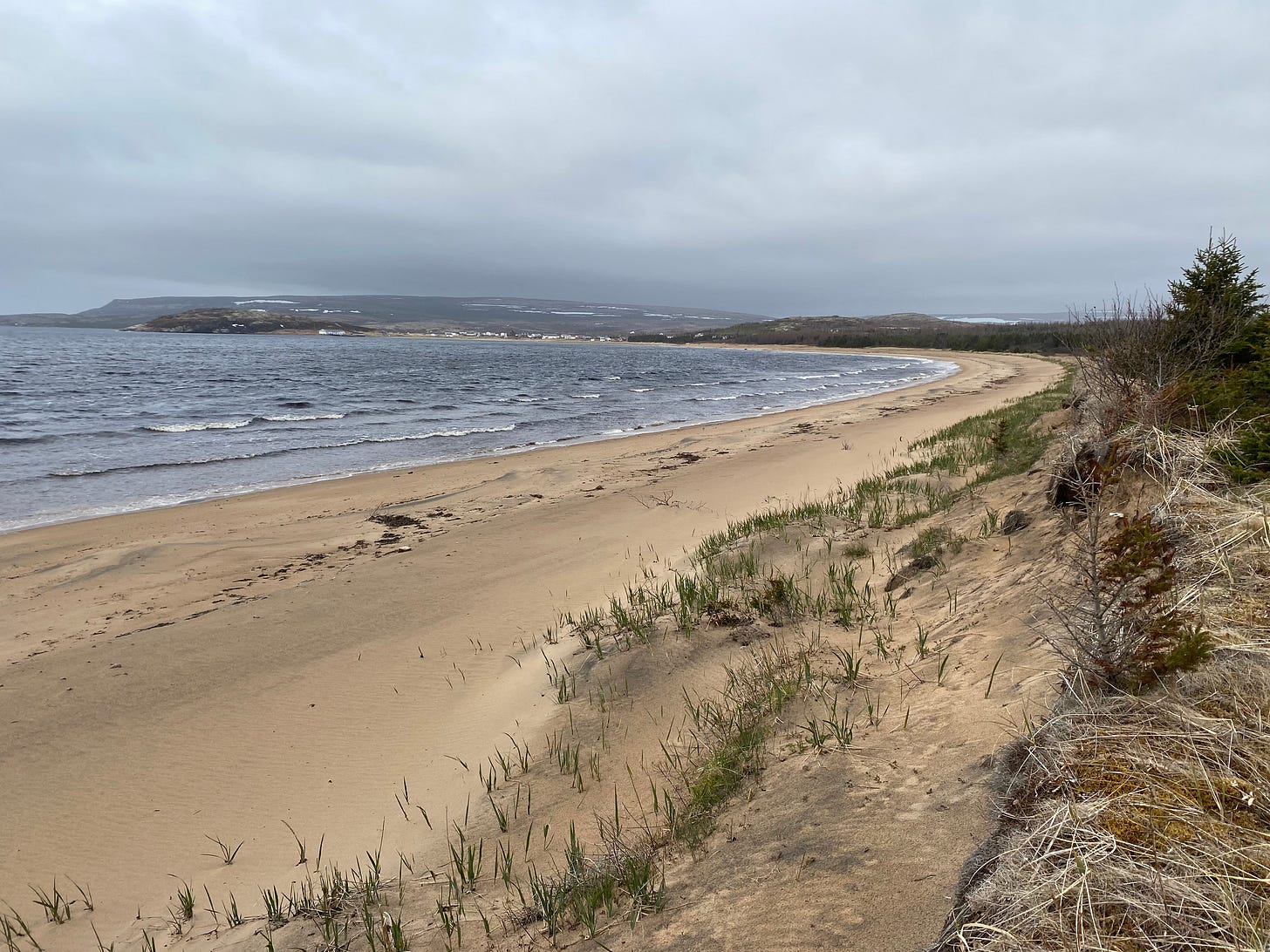The Point Amour Lighthouse
Day 13, June 1
Lighthouses
As a couple, we have a special relationship with lighthouses. Our first kiss, more than four decades ago, happened in a lighthouse on Lake Superior during a thunderstorm. I still get a little giddy in lighthouses, especially in bad weather.
If you’d like to read the whole story, it’s chapter 28 in my book, RUINED, available at Amazon, any bookstore, Audible, or direct from me.
The fog rolling in as we drove up the Labrador Coastal Highway did not deter us from detouring to see the Point Amour lighthouse. We took a foggy photo, then noticed a car nearby. We were not the only people here.
Surprisingly enough, the building itself was not only open, but staffed, with two floors of exhibits. It’s the tallest lighthouse in all of Newfoundland and Labrador and we could even climb into the light where the original Fresnel lens is still burning. We have never seen a Fresnel lens in action before.
A very special place!
From the NL tourism website:
The Point Amour Lighthouse stands tall amid the limestone cliffs on the south coast of Labrador. Climb the 132 steps to the top of the lighthouse – the tallest in Atlantic Canada – and be rewarded with a panoramic view of the Strait of Belle Isle. The lighthouse has figured prominently in the lives of the people of Southern Labrador for nearly 150 years.
Prior to passing through the Strait of Belle Isle on the ferry earlier today, I knew nothing about that body of water. But after seeing a map, the lighthouse’s significance makes sense — prior to it’s existence, ships were unable to navigate the treacherous strait and instead had to sail all the way around the southern coast of Newfoundland. The lighthouses built during the 1850s reduced the danger posed by ice, fog and strong current, and saved each ship at least two days of sailing.
The lighthouse itself is restored, and has exhibits about the various lightkeepers’ families.
There’s a very good model that shows the detail of construction. They weren’t messing around when they built this place. The six foot thick walls are made of stone, covered with bricks, covered with wood siding.
The museum interpreter was a man in his 50s or so, quite knowledgeable and passionate about his subject matter. He answered our many questions and told us some interesting stories about shipwrecks.
According to the interpretive signs, the name, Point Amour, is “a romanticized version of the French name Anse aux Morts (cove of deaths) which is a reference to the number of shipwrecks that have occurred in the area.” Those French, equating death and love!
L’Anse Amour Burial Mound
A short ways down the road, we stopped at L’Anse Amour, a burial mound which is reputed to be the oldest in the North American continent. The site itself is a pile of rocks on a hillside facing the water.
From the NL tourism website:
This is the site of the oldest known First Nations funerary monument in North America. Dating to the Maritime Archaic period about 7,700 years ago, the carefully built mound of rocks over a stone burial box marked the grave of a young person. Interred with reverence, the body was covered with red ochre and fires were lit on either side. Placed with it were stone and bone spearheads, a walrus tusk, a bone whistle, and the earliest known toggling harpoon in the world. Ancient camps of different ages and cultures found on these beaches make this one of the longest used Indigenous habitation sites in Labrador.
Camping at Pinware River PP
It was past 6:00 with a darkening sky. We began to look for a place to eat, and a place to boondock. The town of West St. Modeste advertised a restaurant so we stopped to check it out. There were a few slot machines, all being played, and a sign that said “Chicken and Chips.” When I asked, an elderly man assured me we could place an order for fried chicken, and it was very good. The place felt quite bleak so we just bought a box of gingersnaps and went on our way.
Just a few minutes down the road we came to Pinware River PP. This small park has a campground tucked between the Strait of Belle Isle and the Pinware River. We pulled in to our assigned site and got set up just in time — a pelting rain began.
Here’s the beach next to our campsite, the next morning.
And let me leave you with a bit of Zen — video of the rushing Pinware River, which we crossed the following day. Sound on.








Awesome trip, and excellent writing. Good to read your stories. Look forward to seeing U2 in October in MN.